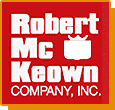Benefits of Potting Electronics
To provide electronic components with sufficient protection against an array of hazards, many fabricators use a process called potting. By potting electronics, you better safeguard electronic wiring, parts, and devices from premature failure so as not to compromise electronic systems. Learn more about potting in electronics, how it works, and its benefits and applications.
What Is Potting in Electronics?
Also known as embedment, the potting process uses a potting compound and a potting box consisting of a plastic case of small to medium size that protects internal components. The enclosure contains the electronic assembly or printed circuit board (PCB). Alternatively, the potting box might instead be a cavity within a bigger case to offer additional protection for your electronics.
Potting entails filling this box within electronic assemblies with either a specialized jelly or a solid compound that allows for increased shock and vibration resistance in a system or device. Potting compound for electronics also helps protect components from elements such as corrosive substances, moisture, gases, and dust. To facilitate potting and encapsulation, manufacturers often utilize certain types of adhesive dispensing systems, as well.
Benefits of Potting Electronics
Potting electronics provides significant benefits that make it an effective solution for many applications. Some of the specific benefits include:
- Shock and Vibration: Potting in electronics protects against shock and vibrations that can cause wires to disconnect and result in system shutdowns. Without potting, vibrations in the PCB and its case may also couple, leading to premature failure due to the increased stress the vibration wave puts on the PCB.
- Tampering, Leakage, and Moisture: In addition to shock and vibration resistance, potting helps protect electronics from tampering, voltage leakage, and moisture. This is especially beneficial for PCBs, and potted systems benefit from more reliable circuits and enhanced overall performance.
- Dust and Dirt: When dust and dirt make their way into electronics, they often cause decreases in performance and operating speed, along with signal interference and overheating. Potting effectively blocks dirt and dust to prevent the gradual buildup that could otherwise harm electronic components.
- Other Elements: Apart from the above, potting electronics will also protect systems from issues such as air, chemical corrosion, high temperatures, electromagnetic interference (EMI), and more to improve the life cycle of your components. Through potting, sensitive electronic parts such as sensors and diodes will be at a reduced risk of the damage and wear that lead to more frequent maintenance and replacements.
Applications of Potting Electronics
Due to the growing reliance on electronic systems of all types, potting has become an essential method for reinforcing components and optimizing performance. Some specific applications of potting in electronics include:
- Automotive. The automotive industry depends on various types of electronic components and systems, with this equipment often facing exposure to elements such as moisture, extreme temperatures, dirt, and vibration. Through potting, systems can withstand these elements more effectively to maximize reliability and reduce the risk of early component failure.
- Construction. Different types of construction vehicles, such as forklifts, often require pressure-washing to clean them following each shift. As a result, these vehicles need electronics that can withstand exposure to moisture and corrosion. Potting supports these systems to ensure they avoid sustaining damage on the job and during cleaning.
- Infrastructure. A wide range of infrastructure electronics requires protection from the elements. These systems may include everything from power supplies and traffic lights to sensors and switches. Sealed enclosures rely on potting to provide adequate protection from UV exposure, aging, mechanical stress, and extreme temperatures, eliminating the need for frequent and extensive repairs or replacements. In turn, governments benefit from more cost-effective infrastructure.
These are just a few examples of the many applications that can benefit from strategic electronics potting to prevent component exposure to fluctuating temperatures and moisture. Even minimal exposure to these and other harmful elements could seriously compromise electronic systems and allow corrosion.
High-Quality Electronics Materials From Robert McKeown
Potting is a highly effective way to optimize functionality and keep electronics safe from moisture and other causes of wear and damage that shorten the lifespan of equipment. For potted electronics made with top-quality materials, Robert McKeown Company, Inc. is here to provide you with customized solutions based on your specific needs.
Since 1937, family-owned Robert McKeown has served as a go-to resource for reliable, high-performance electronics materials and optimized design and redesign. We offer silicone encapsulates, epoxy catalysts, and other adhesive products as protective potting solutions for long-lasting system functionality, thermal conductivity, mechanical stress protection, and more. To learn about Robert McKeown’s engineered materials and what they can do for your application, contact us today.
